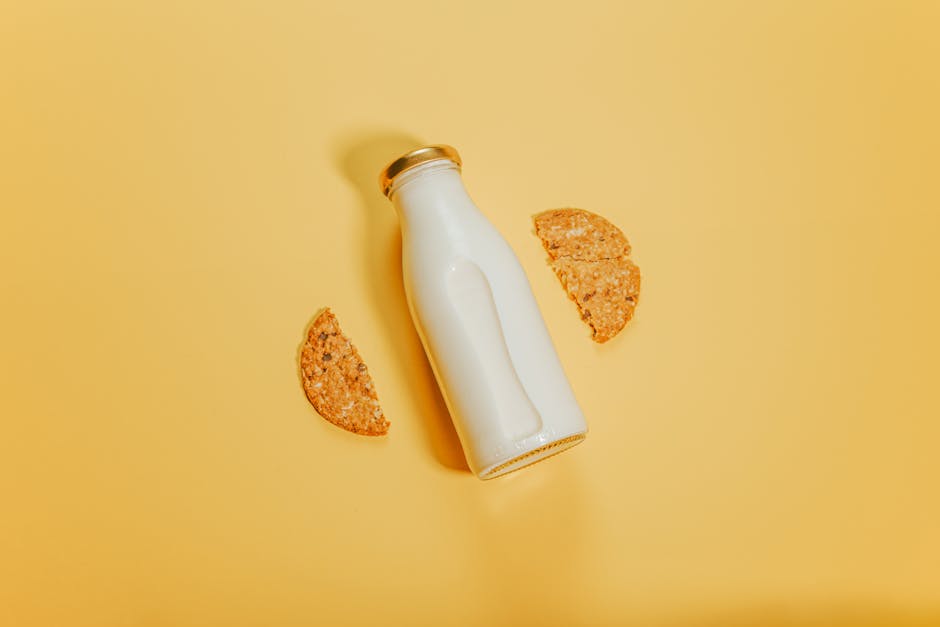Chutneys, those vibrant and flavorful condiments, boast a rich and fascinating history stretching back centuries. Their origins are often traced to India, where the art of preserving fruits and vegetables in vinegar and spices flourished. The word chutney itself is derived from the Hindi word chatni, meaning to lick, perfectly encapsulating the irresistible urge to savor its tangy deliciousness. While the exact date of chutney’s inception remains elusive, historical records suggest its presence in Indian cuisine for at least several hundred years, evolving alongside regional variations and culinary traditions.
Mango chutney, in particular, has become a beloved staple globally. India, the world’s largest mango producer, accounts for nearly half of the global mango harvest, with over 1,000 varieties grown across the country. This abundance of mangoes naturally led to the development of numerous chutney recipes, each showcasing unique flavor profiles reflecting local spices and tastes. The addition of lime elevates the mango’s sweetness with a zesty counterpoint, creating a harmonious balance of flavors. This combination is particularly popular in South Asian cuisine, where it often accompanies curries, grilled meats, and even as a topping for savory snacks.
The cultural significance of chutney extends beyond its culinary role. In many South Asian cultures, chutneys are integral to festive occasions and celebrations, representing abundance and prosperity. They are often prepared and shared amongst family and friends, symbolizing togetherness and community. Beyond its cultural relevance in its homeland, mango lime chutney has gained significant global popularity, making its mark on international cuisine and influencing fusion dishes across continents. Its versatility allows it to complement diverse flavors, showcasing its adaptability and making it a beloved ingredient in kitchens worldwide.
This recipe for homemade mango lime chutney aims to capture the essence of this timeless condiment, offering a delicious and authentic taste experience. By using fresh, high-quality ingredients and following traditional methods, we strive to deliver a chutney that not only delights the palate but also pays homage to the rich history and cultural heritage behind this beloved condiment. Get ready to embark on a culinary journey filled with the sweet, tangy, and spicy notes of this exceptional homemade treat.
Ingredients and Measurements
This recipe yields approximately 2 cups of vibrant mango lime chutney. The quantities listed below can be easily scaled up or down depending on your needs. Always use ripe, fragrant mangoes for the best flavor. Underripe mangoes will result in a tart and less flavorful chutney.
Mangoes: 2 large ripe mangoes (approximately 1.5 lbs total), peeled, pitted, and finely diced. The type of mango you use will influence the sweetness, so choose your favorite variety. Alphonso or Ataulfo mangoes are excellent choices for their rich sweetness and aroma. Ensure your mangoes are completely ripe; a slightly overripe mango will actually enhance the sweetness and texture of the chutney.
Lime Juice: ¼ cup freshly squeezed lime juice. Using freshly squeezed lime juice is crucial for the best flavor and acidity. Bottled lime juice often lacks the vibrant, zesty character of freshly squeezed juice. About 2-3 large limes should suffice. Taste as you go and adjust accordingly – you might need a little more or less depending on the sweetness of your mangoes.
Vinegar: 2 tablespoons white wine vinegar or apple cider vinegar. The vinegar adds a tangy balance to the sweetness of the mango and helps preserve the chutney. White wine vinegar offers a cleaner taste, while apple cider vinegar adds a subtle fruity note. Choose your preferred type based on your taste preference.
Ginger: 1 tablespoon finely grated fresh ginger. Fresh ginger is preferred over ground ginger for its superior flavor and aroma. Adjust the amount of ginger to your liking; some prefer a spicier chutney, while others prefer a milder taste.
Garlic: 1 clove garlic, minced or finely grated. A small amount of garlic adds a subtle savory depth to the chutney. If you’re sensitive to garlic, you can reduce the quantity or omit it altogether.
Sugar: ¼ cup granulated sugar or brown sugar. Brown sugar adds a richer, more complex flavor, but granulated sugar works perfectly well too. Adjust the amount of sugar to your taste, depending on the sweetness of your mangoes.
Chili Powder (Optional): ½ – 1 teaspoon chili powder (adjust to taste). This adds a delightful kick of heat. Start with a smaller amount and add more gradually to avoid making it overly spicy.
Salt: ½ teaspoon salt. Salt enhances the flavors of the chutney. Adjust the amount of salt to your preference, tasting and adding more as needed.
Oil: 1 tablespoon vegetable oil or coconut oil. The oil helps to sauté the ginger and garlic, releasing their aroma and flavor. Coconut oil will impart a subtle coconut flavor, which pairs well with mangoes.
Equipment List
Making delicious homemade mango lime chutney requires the right tools to ensure a smooth and efficient process. This equipment list details everything you’ll need, from preparation to storage, along with recommendations for optimal results.
Cutting Board (Large): A large, sturdy cutting board is essential for comfortably chopping the mangoes and other ingredients. Choose a non-porous material like plastic or bamboo for easy cleaning and to prevent bacterial growth. A size of at least 12 x 16 is recommended to accommodate the mangoes.
Sharp Chef’s Knife (8-10 ): A sharp chef’s knife will make quick work of chopping the mangoes and other vegetables. A dull knife will bruise the fruit and make the chopping process more difficult and time-consuming. Regular sharpening is crucial for maintaining efficiency and safety.
Measuring Cups and Spoons: Accurate measurements are key to achieving the desired flavor balance in your chutney. Invest in a good quality set of measuring cups and spoons to ensure consistency in your recipes. You’ll need various sizes, including 1 cup, ½ cup, ¼ cup, 1 tablespoon, 1 teaspoon, and ½ teaspoon.
Large Saucepan (at least 3-quart): A heavy-bottomed saucepan is ideal for simmering the chutney. The heavy base ensures even heat distribution, preventing scorching and promoting consistent cooking. A 3-quart saucepan should be sufficient for a standard batch, but consider a larger size if you’re making a double batch.
Wooden Spoon or Spatula: A wooden spoon or spatula is perfect for stirring the chutney while it simmers. Avoid using metal utensils, as they can scratch the pot and react with the acidic ingredients. A sturdy spoon or spatula will help you easily stir the thickening mixture.
Immersion Blender (Optional but Recommended): While you can achieve a smooth chutney by using a regular blender or food processor, an immersion blender allows for easy blending directly in the saucepan, saving you the trouble of transferring the hot mixture. This significantly reduces the risk of burns and spillages.
Sterilized Jars and Lids: Once your chutney is cooked and cooled, you’ll need airtight jars to store it properly. Ensure your jars and lids are thoroughly sterilized to maintain freshness and prevent spoilage. Half-pint or pint-sized jars work well for storing homemade chutney.
Funnel (Optional): A funnel can help you easily transfer the hot chutney into the jars without making a mess. This is particularly useful when filling smaller jars.
Preparation of Ingredients
This section details the preparation of the mango and lime for your homemade chutney. Precise preparation is key to achieving the perfect balance of flavors and textures.
Begin with the mangoes. We’ll need approximately 1 kg (2.2 lbs) of ripe, but firm mangoes. Avoid overly ripe mangoes as they may be too soft and mushy for chutney. Select mangoes that are fragrant and slightly yielding to gentle pressure. Wash the mangoes thoroughly under cold running water to remove any dirt or debris. Using a sharp paring knife, carefully peel the mangoes, removing all the skin. Avoid cutting too deeply into the flesh.
Once peeled, cut the mangoes into roughly 1-inch cubes. Consistency is important here; uniformly sized pieces ensure even cooking. If you prefer a smoother chutney, you can consider using a food processor to roughly chop the mangoes after initial cubing. However, leaving some texture adds to the overall appeal.
Next, prepare the limes. You will need 2 large, ripe limes. Roll the limes firmly on a clean surface to soften them and release their juices. This will make juicing easier. Wash the limes thoroughly. Using a sharp knife, cut the limes in half. For optimal juice extraction, use a citrus juicer. If you don’t have one, you can manually juice the limes by cutting them into smaller pieces and squeezing the juice out using a spoon or your hands. Strain the juice to remove any seeds or pulp. Aim for approximately 1/4 cup of fresh lime juice. If you fall short, supplement with a bit more lime juice or lemon juice.
Finally, gather your other ingredients (quantities will vary depending on your recipe). Ginger and garlic, if used, should be peeled and finely minced or grated. Onions should be finely chopped. Always use sharp knives for safer and more efficient preparation. Remember to wash your hands thoroughly before and after handling each ingredient.
Proper preparation ensures that your chutney will be flavorful and visually appealing. Take your time and pay attention to detail for optimal results.
Cooking Method
This recipe yields a vibrant and tangy mango lime chutney. The success lies in careful attention to the simmering process and achieving the right consistency. Begin by preparing your ingredients: ensure the mangoes are ripe but firm, and finely chop all vegetables. We’ll be using approximately 1kg of ripe mangoes, peeled and diced into 1cm cubes; 1 large red onion, finely chopped; 2-3 green chilies, finely chopped (adjust to your spice preference); 200g of fresh ginger, peeled and finely grated; and the zest and juice of 2 large limes.
In a large, heavy-bottomed saucepan, combine the diced mangoes, chopped onion, chilies, and grated ginger. Avoid using a non-stick pan for this recipe, as the sugar in the chutney can damage the coating over time. Add 250ml of white wine vinegar, 250g of granulated sugar, and 1 teaspoon of salt. Stir well to ensure all ingredients are evenly coated. The salt helps to draw out moisture from the mangoes and enhances the overall flavour.
Bring the mixture to a boil over medium-high heat, stirring frequently to prevent sticking. Once boiling, reduce the heat to low, and allow the chutney to simmer gently. This simmering process is crucial; it allows the flavours to meld and the chutney to thicken. Simmer for approximately 45-60 minutes, stirring occasionally to prevent burning. During simmering, the chutney will release moisture. Do not cover the pan; this will help evaporate excess liquid and achieve a desirable consistency.
As the chutney simmers, you’ll notice it gradually thickens. After about 45 minutes, check the consistency by spooning a small amount onto a chilled plate. If it’s still too runny, continue simmering for another 10-15 minutes, checking periodically. The ideal consistency should be thick enough to coat the back of a spoon. Once the desired consistency is reached, stir in the lime zest and juice. This adds a final burst of freshness and acidity, balancing the sweetness.
Remove the chutney from the heat and allow it to cool completely. Cooling allows the flavours to fully develop and the chutney to further thicken. Once cooled, transfer the chutney to sterilised jars, leaving a small headspace. Seal tightly and store in a cool, dark place. Your homemade mango lime chutney will keep for several weeks in the refrigerator. Enjoy it with your favourite curries, grilled meats, or as a condiment for cheese and crackers.
Cooling and Thickening
Once your vibrant mango and lime chutney has finished simmering, the crucial next step is cooling and thickening. This process transforms the hot, slightly runny mixture into a deliciously spreadable chutney. Improper cooling can result in a watery end product, so careful attention to this stage is essential.
The first step is to remove the chutney from the heat. Allow it to cool slightly in the saucepan for about 10-15 minutes. This initial cooling period prevents rapid temperature changes that could affect the chutney’s texture. Avoid placing the hot chutney directly into the refrigerator; this can lead to uneven cooling and potential spoilage.
After the initial cooling, transfer the chutney to a heatproof bowl or container. This allows for better air circulation and more efficient cooling. Cover the bowl loosely with plastic wrap or a clean kitchen towel to prevent dust or debris from settling on the surface. Do not seal the container tightly at this stage, as steam needs to escape.
Now, let the chutney cool completely at room temperature. This usually takes about 1-2 hours, depending on the ambient temperature and the quantity of chutney you’ve made. You can gently stir the chutney every 30 minutes to promote even cooling and prevent skin formation on the surface. Patience is key here; rushing this process can compromise the final texture.
Once the chutney has reached room temperature, you can transfer it to an airtight container and refrigerate it for at least 2-3 hours, or preferably overnight. This allows the flavors to meld and the chutney to thicken further. Refrigeration not only thickens the chutney but also helps preserve it for a longer period.
The final consistency should be thick but still spreadable. If you find your chutney is still too thin after refrigeration, you can gently simmer it again for a few minutes, stirring constantly, to reduce excess moisture. Alternatively, you can try adding a tablespoon of cornstarch mixed with a little cold water to thicken it. Add the cornstarch slurry gradually, stirring continuously to prevent lumps. Remember to bring the chutney back to room temperature before refrigerating again.
Proper cooling and thickening ensures a delightful chutney experience. Enjoy the fruits of your labor!
Storage Instructions
Proper storage is crucial for maintaining the quality and safety of your homemade Mango and Lime Chutney. Following these instructions will help ensure your chutney remains delicious and free from spoilage for as long as possible.
Immediately after preparing your chutney, allow it to cool completely before storing. This is vital to prevent the growth of harmful bacteria. Ideally, let the chutney cool to room temperature, which usually takes around 2-3 hours, depending on the quantity and the ambient temperature.
Sterilization is key. Before storing your chutney, ensure your chosen containers are thoroughly sterilized. This can be achieved by washing them in hot, soapy water, rinsing well, and then either boiling them for 10 minutes or running them through a dishwasher on a high-heat cycle. Allow them to air dry completely before transferring the chutney.
Choose appropriate containers. For optimal storage, use airtight glass jars. These prevent air exposure, which can lead to oxidation and spoilage. Avoid using metal containers as they can react with the chutney’s acidity. Ensure the jars are clean and completely dry before filling.
Filling the jars. Leave approximately 1/2 inch (1.25 cm) of headspace at the top of each jar to allow for expansion during cooling and prevent overflow. Proper headspace is essential for creating a good seal.
Refrigeration is recommended. Once the chutney is cooled and transferred to sterilized jars, store it in the refrigerator. Refrigerated, your chutney should last for approximately 2-3 weeks. Always ensure the jars are tightly sealed to maintain freshness and prevent contamination.
Freezing for extended storage. For longer storage, you can freeze your chutney. Fill the sterilized jars as described above, leaving the recommended headspace. Freeze the chutney for up to 3 months. When thawing, allow the chutney to thaw gradually in the refrigerator. Avoid rapid thawing, as this can affect the texture and flavor.
Checking for spoilage. Before consuming, always inspect your chutney for signs of spoilage. This includes mold growth (any fuzzy or discolored areas), an off-putting odor, or a change in texture. Discard any chutney showing signs of spoilage. Your safety is paramount.
By following these storage instructions diligently, you can enjoy your delicious homemade Mango and Lime Chutney for weeks, or even months if frozen correctly.
Recommendations for Homemade Mango & Lime Chutney
This vibrant mango and lime chutney is bursting with flavor and perfect for a variety of culinary applications. For optimal enjoyment, serve it at room temperature to allow the flavors to fully meld. Its tangy sweetness makes it a delightful accompaniment to numerous dishes.
Serving suggestions abound! Consider it as a topping for grilled chicken or fish, adding a zesty contrast to the savory proteins. It’s equally delicious spooned over roasted vegetables like sweet potatoes or cauliflower, enhancing their natural sweetness. Use it as a flavorful spread in sandwiches or wraps, alongside grilled paneer or tofu for a vegetarian option. A dollop on top of plain yogurt or alongside naan bread also makes for a simple yet satisfying treat.
Storage is crucial for maintaining freshness and quality. Store your chutney in an airtight container in the refrigerator. It should remain fresh for up to 2 weeks. For longer storage, consider freezing it in ice cube trays or small containers, allowing for easy portioning when needed. Remember to thaw completely before serving.
This chutney pairs exceptionally well with South Asian cuisine. It complements dishes such as curries, biryanis, and samosas beautifully. However, its versatility extends beyond this; it can enhance the flavor profile of tacos, burritos, and even breakfast dishes like scrambled eggs and omelets. The bright citrus notes cut through richness and add a refreshing twist.
Nutritional Information (per serving, approximate): Calories: 80-100 (depending on ingredients and portion size), Fat: 2-4g, Carbohydrates: 20-25g, Sugar: 10-15g (naturally occurring from mango), Fiber: 2-3g. Note: This is an estimate and may vary slightly depending on the specific ingredients used. For precise nutritional information, use a nutrition calculator with your exact recipe details.
Important Note: While this recipe aims for a balance of sweet and tart, adjust the amount of lime juice according to your preference. If you prefer a sweeter chutney, reduce the lime juice; for a more tart flavor, increase it. Enjoy experimenting with your own personalized touch!





